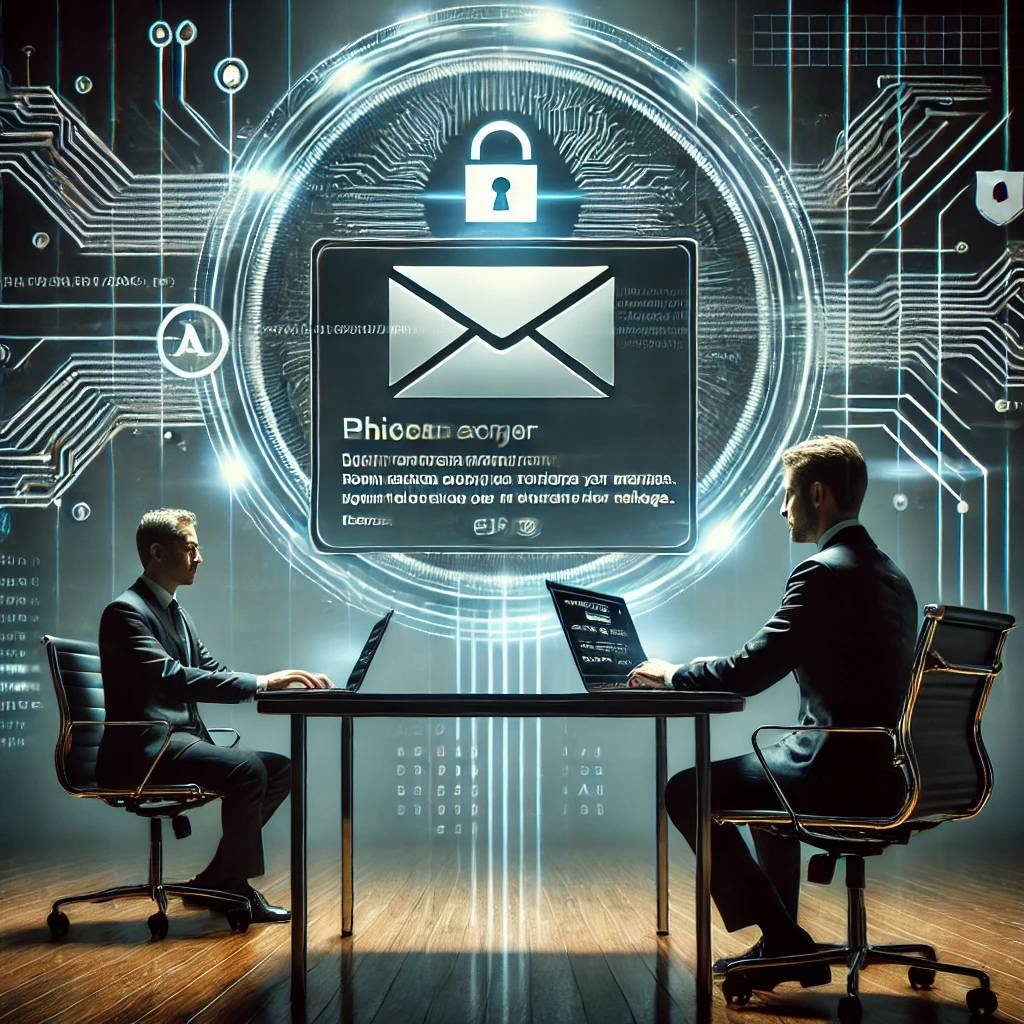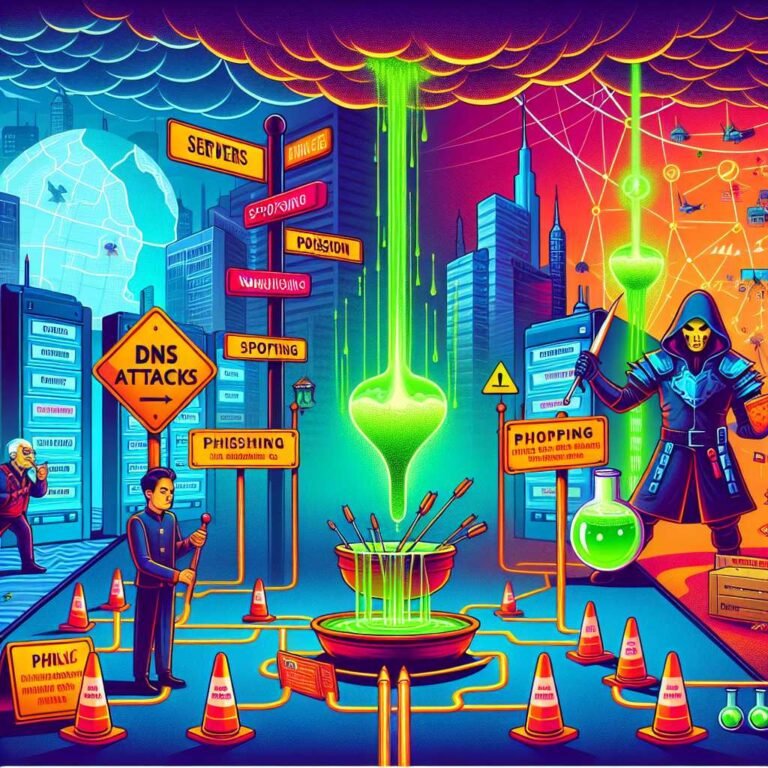Phishing Fuels 90% of Cyberattacks—Here’s How AI Is Reshaping the Battlefield
Join our weekly newsletters for the latest updates and exclusive content on industry-leading AI, InfoSec, Technology, Psychology, and Literature coverage. Learn More
Phishing scams have always been a cornerstone of cybercrime, but with the advent of artificial intelligence (AI), these attacks have evolved to become more sophisticated, targeted, and difficult to detect. According to recent reports, 90% of cyberattacks now originate from phishing emails. What’s particularly alarming is the increasing use of AI by cybercriminals to design highly personalized and convincing phishing campaigns targeting corporate executives and other high-profile individuals.
Companies such as eBay and British insurer Beazley have raised alarms over these AI-driven phishing scams, which use advanced techniques to exploit personal information and bypass traditional security measures.
The Rise of AI-Powered Phishing Attacks
Phishing emails are no longer generic, typo-laden attempts to scam individuals. Instead, AI enables cybercriminals to craft polished, personalized emails by:
- Scraping Online Profiles: AI bots analyze a person’s digital footprint, including social media profiles, professional networks, and online activity, to gather data.
- Mimicking Communication Styles: Generative AI can replicate a target’s tone, writing style, and even typical phrases, making the email appear authentic.
- Predicting Responses: AI tools analyze behavioral patterns to predict how a target is likely to respond, increasing the chances of success.
As Kirsty Kelly, Chief Information Security Officer at Beazley, noted, these attacks are “getting very personal,” with AI being a significant enabler.
Why Executives Are Prime Targets
Corporate executives hold the keys to sensitive company data and financial transactions, making them lucrative targets for phishing attacks. Key reasons include:
- Access to Critical Data: Executives often have access to confidential information and critical systems.
- Busy Schedules: The fast-paced lives of executives make them more likely to overlook red flags in phishing emails.
- Influence and Authority: Impersonating executives can trick employees into executing fraudulent requests, such as wiring money or sharing sensitive data.
AI amplifies these risks by creating highly credible emails that exploit trust and authority within organizations.
How Cybercriminals Use AI to Enhance Phishing Scams
AI is a double-edged sword in cybersecurity. On one side, it helps companies fortify defenses; on the other, it empowers cybercriminals to refine their techniques. Here’s how:
1. Automating Research
AI tools can scan vast amounts of publicly available data in seconds, identifying potential targets and gathering details about their interests, connections, and vulnerabilities.
2. Crafting Realistic Content
Generative AI, like ChatGPT, can create convincing emails that mimic legitimate correspondence. It can replicate organizational templates, signature blocks, and even corporate logos with precision.
3. Scaling Attacks
AI enables the rapid generation of phishing emails tailored to thousands of individuals, making large-scale attacks more effective and resource-efficient.
4. Exploiting Human Emotions
AI-driven scams often manipulate emotions such as fear, urgency, or curiosity. For instance, a phishing email might warn of a security breach, urging the recipient to click a malicious link immediately.
Defending Against AI-Driven Phishing Scams
To combat the growing threat of AI-powered phishing, organizations must adopt a multi-layered cybersecurity approach that combines technology and human vigilance.
1. AI-Powered Defense Tools
Just as AI can be used offensively, it can also strengthen defenses. AI-powered cybersecurity tools analyze patterns, detect anomalies, and identify phishing attempts in real time.
2. Employee Training
Employees are often the weakest link in cybersecurity. Regular training sessions, phishing simulations, and awareness campaigns can help build resilience against social engineering attacks.
3. Multi-Factor Authentication (MFA)
Implementing MFA ensures that even if credentials are compromised, unauthorized access is prevented.
4. Incident Response Plans
Organizations should have a clear plan for responding to phishing attacks, including isolating affected systems, notifying stakeholders, and conducting post-incident reviews.
5. Continuous Monitoring
Monitoring network activity for unusual behavior is crucial for early detection of phishing-related breaches.
The Role of AI in Enhancing Cybersecurity
While cybercriminals exploit AI to advance their schemes, businesses are leveraging the same technology to protect themselves.
AI for Threat Detection
AI systems can analyze massive datasets to identify suspicious patterns and flag potential threats. Machine learning models improve over time, making them increasingly effective at recognizing and mitigating risks.
Automating Incident Response
AI-driven tools can respond to threats autonomously, minimizing damage and reducing response times. For example, they can block malicious IP addresses or quarantine infected systems automatically.
Predictive Analytics
AI helps anticipate future threats by analyzing trends and identifying potential vulnerabilities before they are exploited.

The Human-AI Partnership in Cybersecurity
Despite its capabilities, AI is not a silver bullet. A robust cybersecurity strategy requires collaboration between technology and human expertise. Key aspects include:
- Human Oversight: AI tools need constant supervision to ensure accuracy and avoid false positives.
- Ethical Use of AI: Organizations must prioritize transparency and accountability when deploying AI-powered tools.
- Ongoing Education: Employees at all levels must stay informed about emerging threats and best practices.
Conclusion
The rise of AI-driven phishing scams underscores the evolving nature of cybercrime. As attackers adopt cutting-edge technology to exploit vulnerabilities, businesses must stay one step ahead by investing in AI-powered defenses and fostering a culture of cybersecurity awareness.
Training, advanced tools, and proactive strategies can mitigate risks and safeguard against the growing threat of AI-enabled phishing attacks.
If you want to read more on the topic, you can check out this article. – https://www.pymnts.com/fraud-attack/2025/ai-fuels-reported-rise-in-polished-phishing-scams/
FAQs About AI-Driven Phishing Scams
1. How does AI enhance phishing attacks?
AI enables cybercriminals to automate research, craft convincing emails, and predict responses, making phishing attacks more sophisticated and effective.
2. Why are corporate executives targeted in phishing scams?
Executives often have access to sensitive information and decision-making power, making them prime targets for attackers seeking valuable data or financial gain.
3. Can AI help prevent phishing attacks?
Yes, AI-powered tools analyze patterns, detect anomalies, and automate incident responses to mitigate phishing risks effectively.
4. What steps can companies take to prevent phishing attacks?
Companies can implement AI-driven cybersecurity tools, train employees regularly, use multi-factor authentication, and monitor network activity for unusual behavior.
5. Are phishing scams increasing due to AI?
Yes, reports indicate a significant rise in phishing scams as AI enables more personalized and large-scale attacks.
6. What is the future of cybersecurity with AI?
The future of cybersecurity will likely involve advanced AI tools for both offense and defense, requiring organizations to stay vigilant and adaptive.
Discover more at InnoVirtuoso.com
I would love some feedback on my writing so if you have any, please don’t hesitate to leave a comment around here or in any platforms that is convenient for you.
For more on tech and other topics, explore InnoVirtuoso.com anytime. Subscribe to my newsletter and join our growing community—we’ll create something magical together. I promise, it’ll never be boring! 🙂
Stay updated with the latest news—subscribe to our newsletter today!
Thank you all—wishing you an amazing day ahead!






